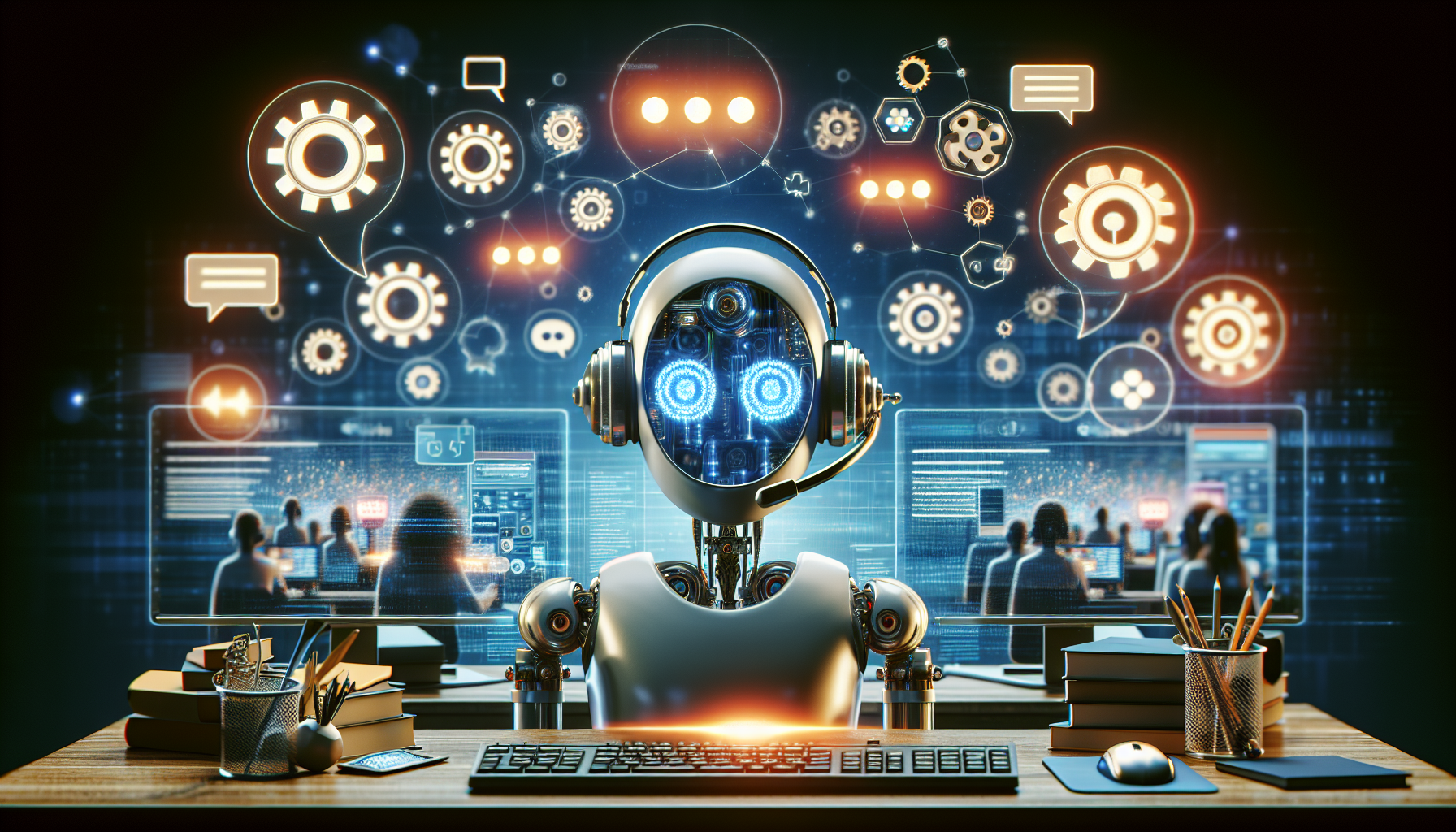Boosting Efficiency: How to Automate Customer Support with Chatbots
Understanding Chatbots in Customer Support
Chatbots are AI-powered tools designed to simulate human interaction, guiding customers through their inquiries and issues with minimal human intervention. By automating responses and facilitating processes, these virtual assistants enable businesses to enhance their customer support operations significantly.
Benefits of Using Chatbots in Customer Support
1. 24/7 Availability
One of the standout features of chatbots is their ability to provide support around the clock. With a chatbot, your customers can receive immediate responses at any time, which is crucial for businesses operating in different time zones. This 24/7 availability enhances customer satisfaction and boosts retention rates.
2. Increased Efficiency
Chatbots streamline customer interactions by handling multiple inquiries simultaneously. This reduces wait times and allows human agents to focus on more complex issues, thereby increasing overall efficiency and productivity within the customer support department.
3. Cost Reduction
Implementing chatbots can lead to significant cost savings. By reducing the dependency on human agents for routine inquiries, businesses can cut down on labor costs while improving service quality. Chatbots handle a high volume of queries, allowing organizations to allocate resources more effectively.
4. Consistent Responses
Chatbots deliver consistent answers to frequently asked questions (FAQs). This consistency eliminates variations in responses from different human agents, ensuring that customers receive the same information regardless of the time or the agent they interact with. This uniformity helps build trust in the company’s brand.
5. Language and Location Flexibility
Modern chatbots can communicate in multiple languages and cater to diverse customer bases. This functionality is particularly beneficial for global businesses with clientele spanning various cultures. By providing support in the customer’s preferred language, companies can foster better relationships and improve customer loyalty.
6. Effortless Integration with Existing Platforms
Most chatbot solutions can integrate seamlessly with existing CRM systems, social media platforms, and websites. This interoperability ensures businesses can enhance their service capabilities without overhauling current systems.
Key Features of Effective Customer Support Chatbots
1. Natural Language Processing (NLP)
Natural Language Processing is crucial for chatbots to understand and respond to user queries accurately. NLP enables these AI tools to grasp context, decipher customer intent, and offer appropriate solutions, enhancing the customer experience.
2. Machine Learning Capabilities
By harnessing machine learning, chatbots improve over time. They learn from interactions, enabling them to refine responses based on common queries and customer feedback, which results in improved accuracy and reliability.
3. Multi-Channel Support
Customers engage with brands through various channels, including websites, social media, and messaging apps. Chatbots should seamlessly operate across these platforms, maintaining user experience consistency, which is essential for efficient customer support.
4. User-Friendly Interface
An intuitive interface simplifies customer interaction with chatbots. By ensuring that the text and options provided are clear and straightforward, businesses can enhance user satisfaction and minimize dropout rates during conversations.
5. Escalation Capabilities
While chatbots handle many inquiries, they must also have the capacity to escalate complex issues to human agents when necessary. This ensures that customer questions receive comprehensive attention, preventing frustration and dissatisfaction.
Best Practices for Implementing Chatbots
1. Define Objectives Clearly
Before deploying a chatbot, businesses should establish clear goals. Determine which tasks the chatbot will handle, such as answering FAQs, scheduling appointments, or tracking orders. Setting specific objectives guides the development process and focuses the chatbot’s capabilities.
2. Personalization
Personalization enhances the effectiveness of chatbots. By utilizing customer data, businesses can tailor responses and interactions to meet user preferences. Personalized experiences make customers feel valued and lead to higher engagement levels.
3. Regular Updates and Maintenance
Continuous improvement is vital for maintaining chatbot efficiency. Regularly updating the chatbot’s knowledge base ensures that it handles new inquiries and reflects current product offerings, promotions, and policies.
4. Monitor Performance Metrics
Tracking key performance indicators (KPIs) provides insights into the chatbot’s effectiveness. Metrics such as resolution time, customer satisfaction scores, and conversation volume help identify areas of improvement and measure return on investment.
5. Customer Feedback Loop
Soliciting customer feedback after interactions with the chatbot can yield valuable information. Businesses should implement feedback mechanisms, allowing users to rate their experience and suggest improvements. Adjusting the chatbot based on this feedback ensures it remains relevant and effective.
Tools and Technologies for Chatbot Development
Brands looking to create customer support chatbots have access to several powerful tools. Here are some popular options:
1. Dialogflow
Offered by Google, Dialogflow is a popular tool designed for building conversational interfaces. Its robust NLP capabilities, combined with support for multiple languages and integration options, make it an ideal solution for businesses aiming to develop sophisticated chatbots.
2. Microsoft Bot Framework
Microsoft’s Bot Framework provides a comprehensive development kit for building and deploying intelligent bots. It offers features such as customizable templates and powerful integrations with various Microsoft products, making it suitable for organizations entrenched in the Microsoft ecosystem.
3. Intercom
Intercom specializes in customer messaging and offers tools to create chatbots designed for customer support. Its automated messaging capabilities, user segmentation, and analytics features enable businesses to enhance the efficiency of both chatbots and human agents.
4. Tidio Chat
Tidio Chat is a user-friendly chatbot and live chat solution that integrates seamlessly with websites. Its simplicity and pre-built templates allow businesses to set up effective chatbots quickly without extensive technical expertise.
5. ManyChat
ManyChat focuses on Facebook Messenger and other social platforms, allowing businesses to engage customers in a social media context. Their user-friendly interface is ideal for marketers looking to automate customer interactions via messaging apps.
Conclusion
Incorporating chatbots into customer support strategies presents an array of advantages, including enhanced efficiency, cost savings, and improved customer experiences. By leveraging the capabilities of chatbots, organizations can streamline operations and stay ahead of customer expectations in a fast-paced digital landscape. Employing best practices in chatbot implementation, alongside utilizing the right tools, ensures that businesses are well-equipped to provide exceptional customer service in an increasingly automated world.


